Replacing the battery in your fire alarm is a crucial step in maintaining the safety of your home. A functioning fire alarm ensures that you are alerted promptly in case of a fire, giving you valuable time to act and potentially saving lives.
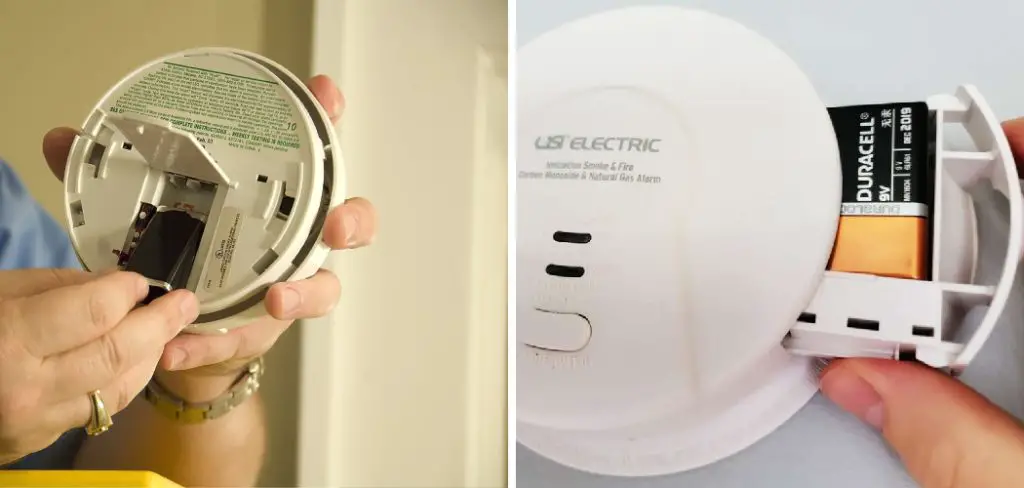
This guide on how to replace a fire alarm battery will walk you through the simple yet important process of changing your fire alarm’s battery, ensuring that your device remains in optimal working condition.
What You’ll Need
New Fire Alarm Battery:
The first thing you will need to replace your fire alarm battery is a new battery. Make sure to check the type and size of the battery required for your specific fire alarm model and purchase the correct one.
Ladder:
In most cases, the fire alarm will be mounted on the ceiling or high up on a wall. A stable ladder will be necessary to reach and safely remove the old battery and install the new one.
Screwdriver:
Some fire alarms may require a screwdriver to open and access the battery compartment. Make sure to have one handy if needed.
9 Step-by-step Guides on How to Replace a Fire Alarm Battery
Step 1: Locate the Fire Alarm

The first step is to locate the fire alarm in your home. It is usually found on the ceiling, but it can also be mounted high up on a wall.
Make sure to turn off any alarms connected to the same circuit before proceeding. The alarm should stop beeping or chirping once the circuit is turned off. You can also test the alarm by pressing and holding the “test” button until it stops sounding.
Step 2: Prepare Your Work Area
Before you begin replacing the battery, ensure that your work area is safe and organized. Lay down a drop cloth or some newspapers under the fire alarm to catch any debris or screws that may fall during the process. Make sure the ladder is stable and placed on a flat surface to avoid any accidents.
Additionally, ensure you have all necessary tools, such as the new battery and screwdriver, within easy reach to streamline the replacement process. Taking these safety precautions will help you complete the task efficiently and safely.
Step 3: Remove the Old Battery
Carefully climb the ladder and reach the fire alarm. Depending on the model, you may need to twist or unscrew the alarm’s cover to access the battery compartment. Once open, identify the old battery. Gently remove it by either sliding it out or disconnecting the attached terminals.
Be cautious not to damage the battery connectors during this process, as they are vital for the proper functioning of the new battery. Ensure you dispose of the old battery according to local regulations, typically at a designated recycling facility.
Step 4: Check the Battery Compartment
With the old battery removed, take a moment to inspect the battery compartment for any signs of corrosion, dust, or debris.
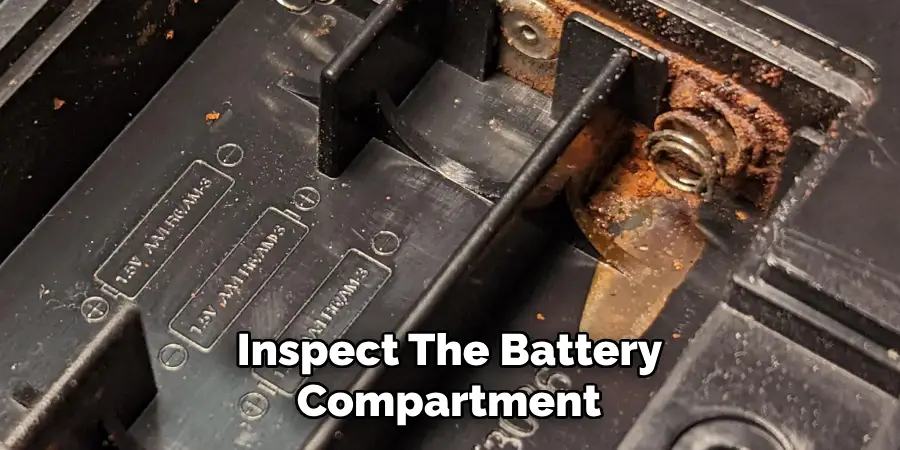
Corrosion can hinder the performance of the new battery and may even cause damage to the fire alarm. If you notice any buildup or residue, clean the compartment gently using a dry cloth or an electronics-safe cleaning brush.
Make sure the battery connectors are free from any obstructions and are not bent or damaged. Ensuring the compartment is clean and the connectors are intact will help secure a solid connection for the new battery, ensuring the fire alarm functions correctly.
Step 5: Check the New Battery
Before installing the new battery, it’s important to ensure it is in proper working condition. Inspect the battery for any visible damage, such as leaks or dents, which could indicate a defective product.
Verify that the new battery matches the specifications required by your fire alarm. Most fire alarms use specific types like 9V or AA batteries, so double-check the size and voltage.
It’s also a good practice to use a multimeter to test the new battery’s voltage and confirm it is fully charged. This step helps prevent any issues that might arise from installing a faulty or drained battery, guaranteeing the reliable operation of your fire alarm.

Step 6: Install the New Battery
With everything checked and in order, it’s time to install the new battery. Slide or connect the terminals of the new battery into their designated slots or connectors, making sure they are secure.
Some fire alarms may require you to twist or snap the battery into place, so follow your specific model’s instructions. Double-check that the positive (+) and negative (-) terminals match with their respective connectors in the alarm. If applicable, reattach any screws or covers removed earlier for accessing the battery compartment.
Step 7: Test Your Fire Alarm
With the new battery installed, turn on the circuit connected to your fire alarm and press and hold down the “test” button again. The alarm should sound and emit a loud, continuous noise.
If it beeps or chirps, it could indicate that the new battery is not inserted correctly, or there may still be an issue with the alarm itself. Check the battery connections and try again. If the issue persists, contact a professional to inspect your fire alarm for any potential problems.
Step 8: Reset the Fire Alarm System
Once you have verified that your fire alarm is working correctly, reset the system by pressing and holding down the “reset” button.
The alarm should stop sounding and return to its normal function of monitoring your home for smoke or fire. In case of any technical issues or difficulties resetting your alarm, refer to the manufacturer’s manual or contact their customer service department for assistance.
Step 9: Maintain Your Fire Alarm
Congratulations, you have successfully replaced your fire alarm battery! However, it’s essential to regularly check and maintain your fire alarm to ensure it continues functioning correctly. It is recommended to replace the battery every 6-12 months, depending on usage and battery life.
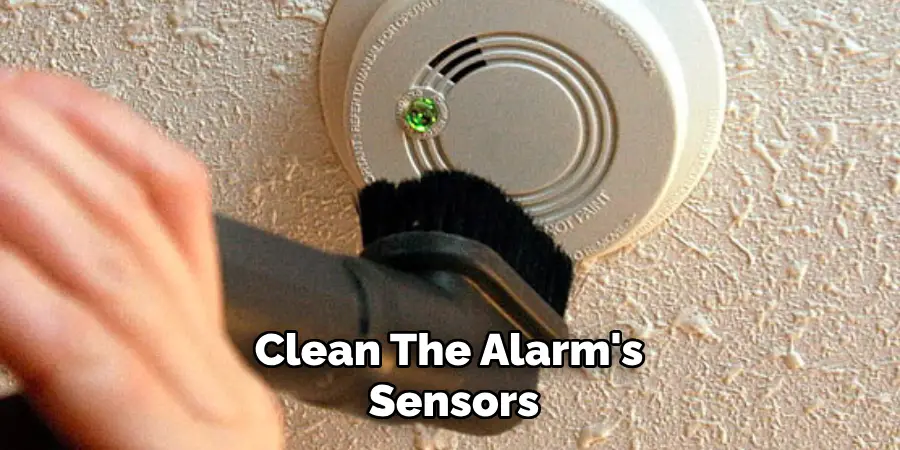
Additionally, clean the alarm’s sensors and exterior periodically using a dry cloth or compressed air canister. Regular maintenance will guarantee your fire alarm is always ready in case of an emergency, providing peace of mind for your and your family’s safety.
Following these steps on how to replace a fire alarm battery will help you safely and effectively replace your fire alarm battery. Remember to always prioritize safety and consult a professional for any issues or concerns with your fire alarm system. Stay vigilant, stay prepared, and stay safe!
Additional Tips and Information
- Familiarize yourself with the different types of fire alarms available in the market, as their maintenance and replacement procedures may vary.
- Keep spare batteries on hand in case of emergency replacements.
- Consider installing interconnected smoke alarms throughout your home for increased safety, where one alarm triggers all others to sound in case of a fire.
- Test your fire alarm monthly by pressing the “test” button to ensure it is functioning correctly.
- Replace the entire fire alarm unit every 8-10 years, as its sensors may become less sensitive over time. Check the manufacturer’s recommendations for your specific model.
- In case of a false alarm, try cleaning the alarm’s sensors and checking for any obstructions or environmental factors that could trigger it. If the issue persists, consider replacing the unit to ensure proper functioning in an emergency.
- Always follow the manufacturer’s instructions and safety precautions when handling any electronic devices.
- Consider creating a fire escape plan with your family and regularly practicing it to ensure everyone knows how to react in case of a fire. Remember to always evacuate immediately if there is a real emergency and contact emergency services for assistance.
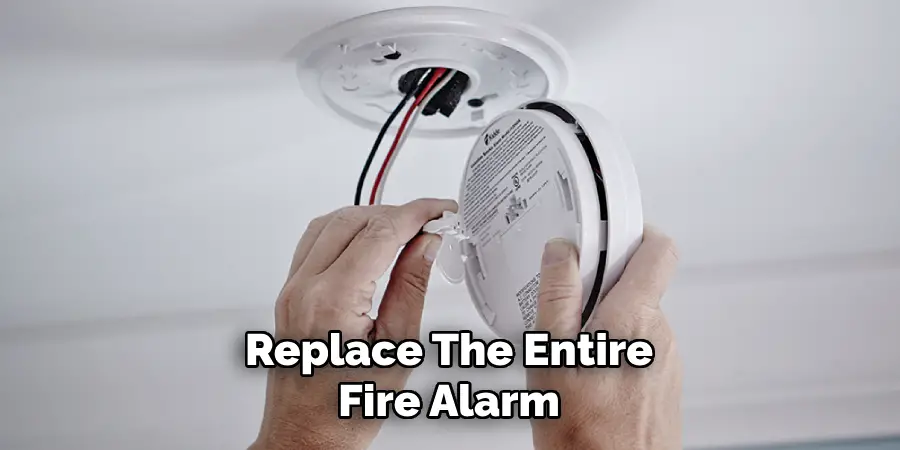
Maintenance and Prevention
Proper maintenance and proactive measures are key to ensuring the longevity and effectiveness of your fire alarm system. Here are essential tips on maintenance and prevention to keep your household safe:
Regular Inspections
Schedule regular inspections of your fire alarms to check for any signs of wear or malfunction. This includes ensuring the alarm is firmly attached to the ceiling or wall, the casing is intact, and there are no visible signs of damage. Regular inspections will help in the early detection of potential issues that could compromise the alarm’s performance.
Battery Maintenance
As previously mentioned, replace your fire alarm batteries every 6-12 months or as recommended by the manufacturer. Additionally, keep spare batteries in a readily accessible location so you can quickly replace them if needed. Ensure that you responsibly dispose of used batteries according to local regulations.
Cleaning and Dusting
Dust and debris can interfere with the fire alarm’s sensors, possibly leading to false alarms or reduced sensitivity. Clean the exterior and the sensor area of your fire alarms with a dry cloth or a can of compressed air at least once every six months. Avoid using water or any liquid cleaners, as they could damage the internal components.

Testing Alarms
Test your fire alarms monthly by pressing the “test” button to ensure they are operational. The alarm should emit a loud noise, indicating that the device and its battery are functioning correctly. If the alarm does not sound, check for battery issues or any sensor obstructions and address them promptly.
Replacing Units
Even with regular maintenance, fire alarms have a finite lifespan and should be replaced every 8-10 years, depending on the manufacturer’s instructions. Aging sensors can lose their effectiveness, so it’s crucial to adhere to these timelines to ensure reliable performance.
Environmental Factors
Be mindful of your fire alarm’s location and the environmental factors that could affect its efficiency, such as humidity, smoke, or cooking fumes. Consider installing alarms in optimal locations, away from kitchens and bathrooms where false alarms are more likely.
Professional Inspections
For comprehensive maintenance, consider scheduling professional inspections. Fire safety professionals can provide a thorough examination of your alarms and offer expert recommendations for any necessary adjustments or upgrades.
By adopting these maintenance and prevention strategies, you can enhance the reliability of your fire alarms and ensure your home remains a safe environment for you and your family.
Safety Considerations
Proper Installation
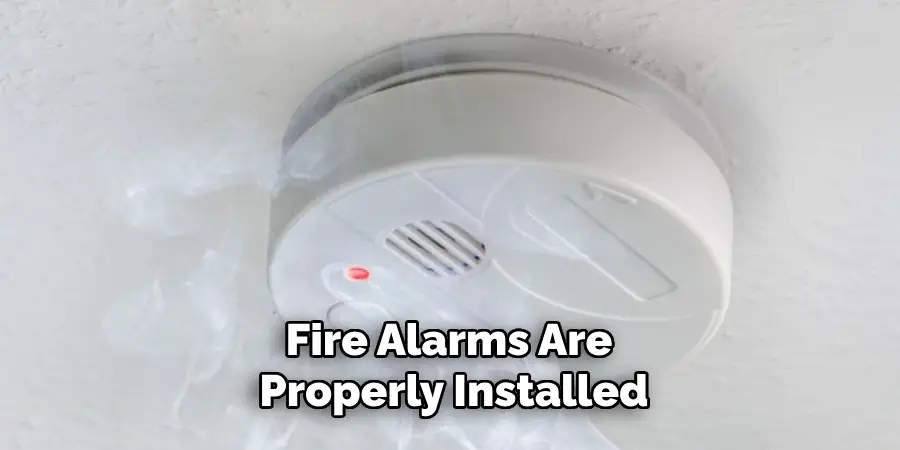
Ensuring your fire alarms are properly installed is crucial for their effectiveness. Follow the manufacturer’s instructions for the correct placement and attachment of each unit. Ideally, fire alarms should be installed on every level of your home, including inside bedrooms and outside sleeping areas.
Avoid placing alarms too close to kitchens or bathrooms where steam and cooking fumes could cause false alarms.
Avoid Tampering
Never tamper with fire alarm components. Tampering can impede the alarm’s functionality, leaving you and your family vulnerable in case of an emergency. If you’re experiencing frequent false alarms or other issues, consult the manufacturer’s troubleshooting guide or contact a professional technician instead of attempting to fix it yourself.
Educate Household Members
Ensure that all members of your household, including children, understand the importance of fire alarms and how they operate.
Conduct regular fire drills and educate everyone on the sound of the alarm and the proper actions to take when it goes off. Knowledge and preparedness are crucial components of fire safety.
Monitor Battery Levels
One common reason fire alarms fail during emergencies is due to dead or low batteries. Monitor your fire alarm batteries regularly and keep track of when they were last replaced. Some fire alarms come with low battery warnings — if you hear these beeps, replace the battery immediately.
Consider Special Needs
Take into account any special needs of household members. For instance, for individuals with hearing impairments, consider using fire alarms with visual alerts, such as flashing lights, or those that produce a lower frequency sound. Making these accommodations ensures that everyone in the home is appropriately alerted in the event of a fire.
Avoid Obstructions
To maximize the efficiency of your fire alarms, ensure they are free from obstructions. Keep furniture, drapes, and other objects away from the alarms to allow smoke to reach them easily. This helps in the faster detection of any fire incidents.
Regular Updates and Upgrades
Fire alarm technology continually evolves, offering new features for improved safety. Stay informed about the latest advancements in fire alarm systems and update your units as necessary.
Upgrading to newer models with interconnected capabilities or smart home integration can provide enhanced protection.
By adhering to these safety considerations, you can significantly improve the effectiveness of your fire alarm system and enhance the safety of everyone in your home.
Frequently Asked Questions
Q: Can I Use Rechargeable Batteries for My Fire Alarm?
A: It is generally recommended to use non-rechargeable batteries for fire alarms as they have a longer lifespan and maintain their charge better in case of a power outage.
However, if you choose to use rechargeable batteries, make sure to replace them more frequently and test their voltage regularly. You may also need to reset your fire alarm more frequently as well.
Q: How Often Should I Replace My Fire Alarm Battery?
A: It is recommended to replace your fire alarm battery every 6-12 months, depending on usage and the battery’s lifespan. Some models may have an indicator light that alerts you when the battery needs replacement, but it’s always best to proactively check and replace the battery as a safety measure.
Q: Do I Need a Professional to Replace My Fire Alarm Battery?
A: While replacing a fire alarm battery can be done by most individuals, it is always better to err on the side of caution and consult a professional if you are unsure or uncomfortable with handling electronic devices.
Additionally, if there are any issues with the alarm itself, it is best to contact a professional for proper inspection and maintenance. Remember, safety should always be the top priority when dealing with fire alarms and their components.
Q: How Do I Dispose of Old Fire Alarm Batteries?
A: It is essential to dispose of old fire alarm batteries properly. Contact your local waste management or recycling center for specific guidelines on how to recycle or dispose of batteries safely. Do not throw them in regular household trash bins as they can be harmful to the environment if not disposed of correctly.
Conclusion
Proper maintenance and timely replacement of your fire alarm battery are crucial for the safety and security of your home. By following the steps outlined in this guide on how to replace a fire alarm battery, you can ensure that your fire alarm remains in optimal working condition and is ready to alert you in the event of a fire.
Regular checks and battery replacements, along with keeping your fire alarm clean and testing it monthly, will contribute significantly to the longevity and reliability of the device.
Additionally, staying informed about the latest fire safety guidelines and technologies can further enhance your home’s protection.
Remember, a well-maintained fire alarm system is a small investment that can make a big difference in safeguarding your family and property. Stay proactive, stay safe, and take every measure to ensure your fire alarm is always functioning correctly.
